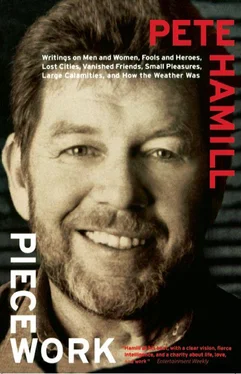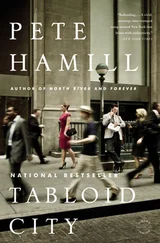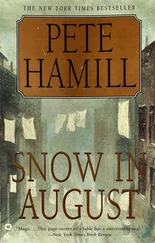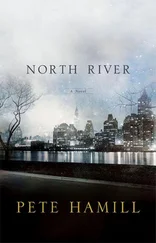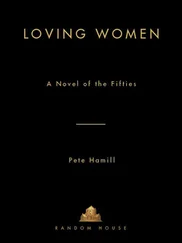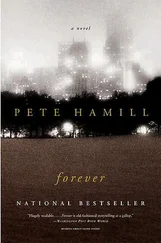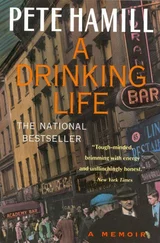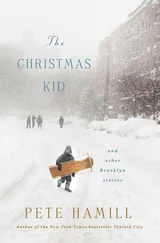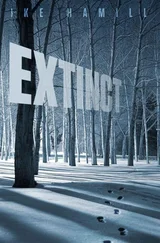Pete Hamill - Piecework
Здесь есть возможность читать онлайн «Pete Hamill - Piecework» весь текст электронной книги совершенно бесплатно (целиком полную версию без сокращений). В некоторых случаях можно слушать аудио, скачать через торрент в формате fb2 и присутствует краткое содержание. Год выпуска: 2009, ISBN: 2009, Издательство: Little, Brown and Company, Жанр: Современная проза, Публицистика, на английском языке. Описание произведения, (предисловие) а так же отзывы посетителей доступны на портале библиотеки ЛибКат.
- Название:Piecework
- Автор:
- Издательство:Little, Brown and Company
- Жанр:
- Год:2009
- ISBN:9780316082952
- Рейтинг книги:5 / 5. Голосов: 1
-
Избранное:Добавить в избранное
- Отзывы:
-
Ваша оценка:
- 100
- 1
- 2
- 3
- 4
- 5
Piecework: краткое содержание, описание и аннотация
Предлагаем к чтению аннотацию, описание, краткое содержание или предисловие (зависит от того, что написал сам автор книги «Piecework»). Если вы не нашли необходимую информацию о книге — напишите в комментариях, мы постараемся отыскать её.
offers sharp commentary on diverse subjects, such as American immigration policy toward Mexico, Mike Tyson, television, crack, Northern Ireland and Octavio Paz.
Piecework — читать онлайн бесплатно полную книгу (весь текст) целиком
Ниже представлен текст книги, разбитый по страницам. Система сохранения места последней прочитанной страницы, позволяет с удобством читать онлайн бесплатно книгу «Piecework», без необходимости каждый раз заново искать на чём Вы остановились. Поставьте закладку, и сможете в любой момент перейти на страницу, на которой закончили чтение.
Интервал:
Закладка:
None of this was new. In Nathan Silver’s elegiac 1967 book, Lost New York, we can see photographs of many of the vanished ornaments of our city: the beautiful Produce Exchange at Beaver and Bowling Green, destroyed in the mid-fifties; the three Brokaw mansions at 79th and Fifth, two of which were smashed into rubble in 1965, to be replaced by an ugly high rise; Rhinelander Gardens on nth Street between Sixth and Seventh Avenues, with their cast-iron filigreed balconies and deep front gardens, demolished in the late fifties; the splendid Studio Building at 51-55 West 10th Street, designed by Richard Morris Hunt, inhabited by a string of artists, including John La Farge and Winslow Homer, until it was demolished in 1954; the elegant, high-ceilinged cast-iron buildings on Worth Street between Church and Broadway, torn down in 1963 to make way for a parking lot; the old Ziegfeld Theater at 54th and Sixth; the Astor Hotel on Broadway between 44th and 45th; dozens of others. A city is always more than its architecture, but to destroy the past that is expressed by enduring architecture is an assault on history itself. Growing up here, you learned one bitter lesson: Whenever something was destroyed for the crime of being old, what replaced it was infinitely worse.
All along, there were complaints from architects, historians, and a few concerned citizens about this municipal vandalism. Usually, they were dismissed as the sentimentalities of cranks. But after a group of dreadful men ordered the destruction of Pennsylvania Station in 1963 to make way for the equally dreadful new Madison Square Garden (they subsequently brought their gift for ruin to the railroad itself), there was a widespread sense of horror and fury. Outraged citizens fought for and won the establishment of a Landmarks Preservation Commission. Many buildings have been saved, including Grand Central Terminal and Radio City Music Hall. But when it was decided to slam the Marriott Marquis Hotel into Times Square a few years ago, it was still impossible to save the Astor theater (opened in 1906), the Bijou (1917), the Gaiety/Victoria (1909), the Helen Hayes (1911), and, most heartbreaking of all, the Morosco, which had survived wars, depression, and turkeys since 1917. They’re gone. Forever.
But listen: someone out in the street is playing an old tune. We are in a white, silent house in Gramercy Park in winter or out upon the granite cliffs of Fort Hamilton. Snow is falling. It is almost midnight. Listen: It’s the sound of an organ-grinder. And if you surrender to the sound, you can go back.…You can still call down to a neighbor through the dumbwaiter shaft. You can go to Grand Central and pick up the 20th Century Limited for Chicago on Track 34. You can sip coffee at the Cafe Royal on 12th Street at Second Avenue and listen to the sound of Yiddish. You can celebrate St. Patrick’s Day at Moskowitz & Lupowitz. You can gaze up at the Stuyvesant building at 142 East 18th Street and know that here Richard Widmark kicked that old lady down the stairs. You can go to a rent party on a Saturday night and then go to Minton’s Playhouse and hear Art Tatum. You can shop at the Hester Street market or at Wanamaker’s, at Namm’s or Loeser’s or Mays or Martin’s in Brooklyn, at Gertz in Jamaica, at Best and Company or Ohrbach’s, at Masters or Korvette’s. You can still go to Gimbel’s. If you are poor, you can go to S. Klein on Union Square and battle for bargains with the toughest women in the history of New York.
If it’s very late and you are hungry, you can take a cab to the Belmont Cafeteria downtown or the Garfield on Flatbush Avenue. Better: Wait till tomorrow; there’s a 99-cent hot lunch at the Tip Toe Inn on 86th and Broadway. Have the brisket and then drop a nickel in the subway and go downtown and take a walk. The old socialists are still discussing the imminent collapse of capitalism with the writers from the Forvetz at the Garden Cafeteria. In Union Square, they are arguing about surplus value, the Spanish Republic, and the true meaning of Marx’s Grundriss.
Or wander through midtown. That’s Frankie Carbo, the gangster, at the bar of the Neutral Corner, up the block from Stillman’s Gym, and if you don’t like his company, and you’ve already seen the fighters work out at Stillman’s, you can go up to Harry Wiley’s in Harlem and catch Sugar Ray Robinson or go down to 14th Street, where Cus D’Amato has a kid named Patterson in the Gramercy Gym. You can get into a big old Packard, as I did with my father and his friends once during the war, and ride out to the Gym at Georgia and Livonia in Brownsville, where Bummy Davis trained under the agate eyes of the hoods from Murder Incorporated. You can see fights at the St. Nicholas Arena on West 66th Street, at the Eastern Parkway Arena, the Ridgewood Grove, the Coney Island Velodrome, Fort Hamilton Arena, the Broadway Arena, the Star Casino in the Bronx, or the Jamaica Arena. Or if it’s a Friday night, you can go through the lobby of the old Garden at Eighth Avenue and 50th Street, past the detectives and the wiseguys and the fight managers, past the bronze statue of Joe Gans, and into the great smoky arena.
In the Lost City of New York, the subway will be a nickel forever, and if you fall asleep and travel to the end of the line, you will still have your wallet and your life. In the Lost City, you can still go to Dexter Park on Eldert’s Lane on the Brooklyn-Queens border and see the amazing players from the Negro Leagues, maybe even Josh Gibson, who once hit a ball out of there that traveled more than 600 feet; you can see the Bushwicks play baseball, hoping for a call from Branch Rickey; you can watch the House of David baseball team and the best of the immigrant soccer teams. We still have the Polo Grounds. We still have Ebbets Field. We still have Willie Mays.
If it’s a sultry August evening, you will be able to hurry down to Sheepshead Bay and step up to the Clam Bar at Lundy’s. Or you can drive out to Rockaway, get on the rides at Playland, drink cold beer and eat pig’s feet at Fennessey’s, Gildea’s, or Sligo House, McGuire’s or the Breakers, and look at the girls outside Curly’s Hotel at 116th and the ocean.
If that is too long a journey, you can ride one of the many ferries that cross the Hudson each day to Jersey. You can swim in the rivers without fear of disease, and even swim at night with the seals in the Prospect Park Zoo. You can trust the oysters from Long Island Sound. You can spend an entire Saturday among the used bookshops along Fourth Avenue. You can watch seaplanes flying down the East River, dipping elegantly under the bridges and out to the vast harbor. Listen: You might even hear the Pan Am Clipper leaving from Floyd Bennett for Lisbon.
The Lost City is full of forgotten common and proper nouns: Red Devil paint, Cat’s Paw soles and heels, Griffin All-Black polish might still exist, but I don’t see them anymore. Nor do I see beers called Trommer’s White Label, Ruppert’s, and Rheingold, candies called Sky Bars, Houten’s, and B-B Bats. And for young men going out on dates, a repulsively flavored package of licorice microchips called Sen-Sen that is guaranteed to keep your breath sweet while kissing. In some lost year, Junior Persico is in Rosie’s Royal Tailors next to the 72nd Precinct in Brooklyn, being measured for pants with a three-inch rise, pistol pockets, saddle stitching, a balloon knee, and a thirteen peg. He will walk home looking like an Arabian prince.
Meanwhile, the eternal New York war against the cockroach is being waged with J-O Paste and Flit. The men are smoking Fatimas and Wings. In the candy stores, they are selling “loosies” (2 cents a cigarette, two for 3), mel-o-rolls, Nibs, hard car’mels, Bonomo Turkish taffy, long pretzels, Mission Bell grape and Frank’s orange soda, twists, egg creams, lime rickeys, and a nice 2-cents plain. Everybody knows what a skate key is and what it means when your wheels get “skellies.” A pound of butter is carved from wooden tubs. Here, your only jewelry is a Captain Midnight code-o-graph or a Tom Mix whistling ring. And here you always have spaldeens. An endless supply. Pink and fresh and beautiful. Spaldeens: made no longer by the A. G. Spalding Company; street kids now would rather smoke crack than hit a ball three sewers. But we still have them here in the Lost City. Spaldeens: traveling high into the sky of a thousand neighborhoods in the game called stickball. The game is almost never played anymore, except by aging men. In the Lost City of New York, we will play it forever.
Читать дальшеИнтервал:
Закладка:
Похожие книги на «Piecework»
Представляем Вашему вниманию похожие книги на «Piecework» списком для выбора. Мы отобрали схожую по названию и смыслу литературу в надежде предоставить читателям больше вариантов отыскать новые, интересные, ещё непрочитанные произведения.
Обсуждение, отзывы о книге «Piecework» и просто собственные мнения читателей. Оставьте ваши комментарии, напишите, что Вы думаете о произведении, его смысле или главных героях. Укажите что конкретно понравилось, а что нет, и почему Вы так считаете.
